4 Islands MTB Race on Krk, Cres, Lošinj and Rab Becomes Part of Ironman Epic Series
April 12, 2022 - The 4 Islands MTB Race is a five-day mountain bike race whose primary goal is to promote mountain biking as a recreation, hobby, sport, and lifestyle.
This year differs from events in the past in that the Ironman group bought the Kvarner race and presented the "4 Islands MTB race" as part of their Epic series. Thus, Croatia and Kvarner will stand alongside Switzerland, Australia, New Zealand, Wales, Andorra, and South Africa. The additional value of this event is the promotion of the Croatian islands of Krk, Rab, Cres, and Lošinj as cycling destinations and improving cycling tourism as an alternative form of tourism in Croatia.
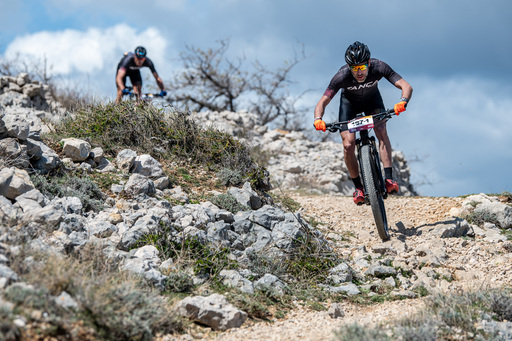
Vedran Metelko
In five days, the cyclists will cover 270 kilometers of trails and over 5,000 meters of total altitude. The race takes place every day on a different island, which is a demanding logistics and an unforgettable experience for competitors and companions. It gathers about 600 competitors from more than thirty countries worldwide, and thanks to the professional and intensive organization, participants can enjoy events in a family environment and concentrate only on their competition.

Ivan Sardi
Thanks to the top initiative of the hosts and their pleasant welcome, hard work of the organizing team, and excellent cooperation with partners, the synergy of sports and off-season tourism is achieved in Croatia, which is at its peak, and returning competitors have recognized this for several years. The race is held at the beginning of the cycling season, so it is conceptually arranged to extend the tourist season and open the cycling season of training and outdoor racing after winter.
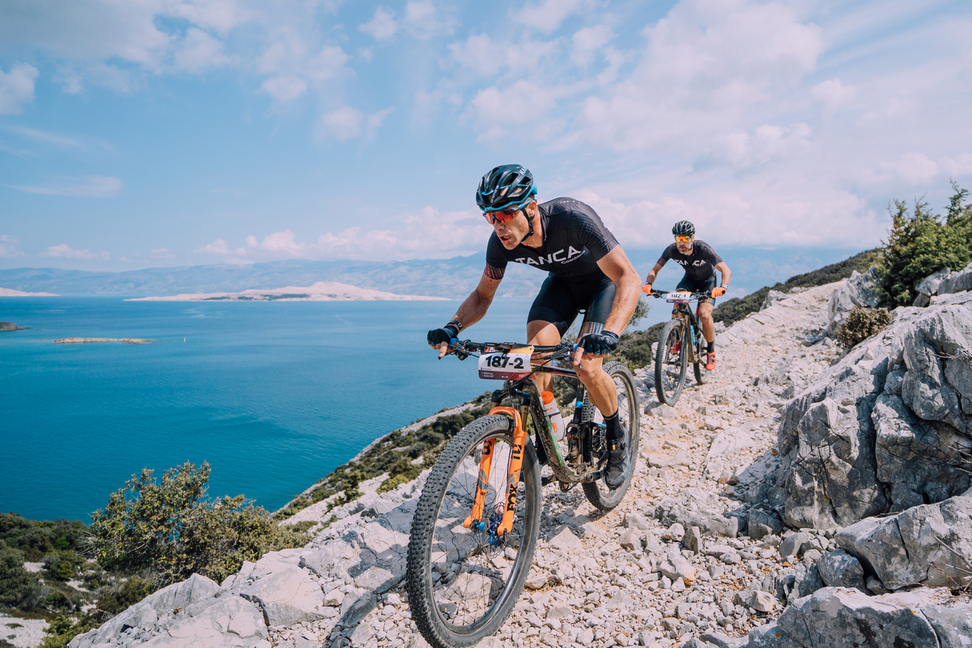
Ivan Sardi
It is possible to compete in several categories, thus enabling fair participation of competitors of different age groups and combinations. Furthermore, racing side by side with the professionals of this sport is something that makes this race and cycling itself exceptional. It is an amateur race side by side with professionals that allow the interaction of amateurs and lovers of the sport and their idols.
The project organizer, Tomislav Zobec, revealed that the vision of the project is to position the 4 Islands MTB stage race as one of the most recognizable stage mountain bike races in the world and achieve a sustainable project for the company and the local community.
"We want to promote mountain biking and provide users with a unique cycling experience in unique locations and become a race with the world's strongest names in the sport."
"We are delighted to participate in such an event because this is another opportunity to position ourselves as an important destination for cycling tourism. Both Baška and the island of Krk and the whole of Croatia are still insufficiently discovered pearls for tourists looking for adrenaline, rest, and great experiences of the destination. We have just all of that, and that is why we are big supporters of such events, and I hope that there will be more and more of them. It is an honor and pleasure to be a part of this beautiful and truly inspiring story," said Ivana Topic, the Baška Tourist Board director.
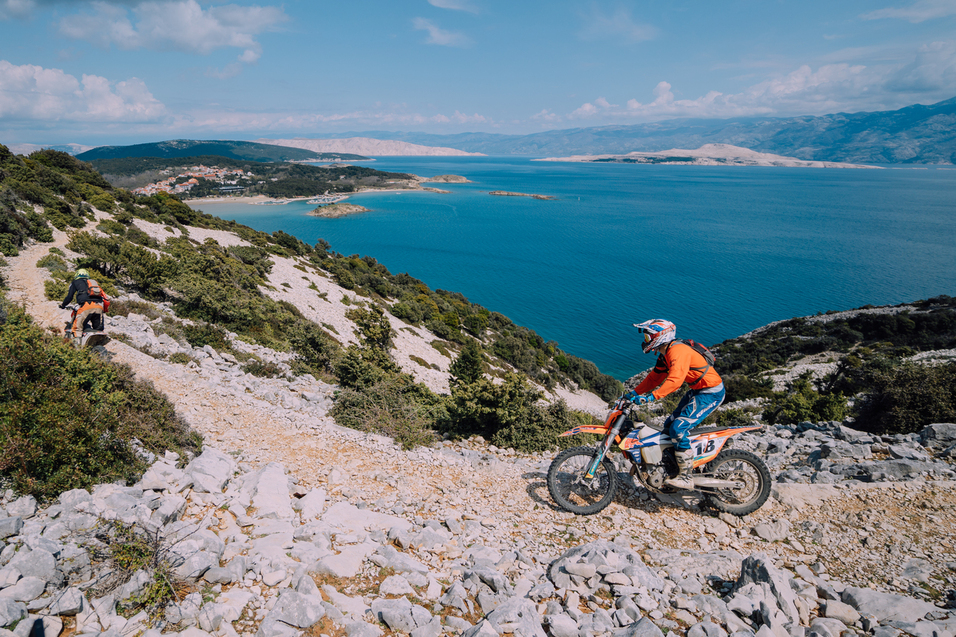
Ivan Sardi
It is important to emphasize that the trails on all four islands are cleaned and prepared every year. After the race, they are enjoyed by many walkers, runners, and cyclists. Most of the trails that were or are part of the race today are part of the island's tourist offer.
The race takes place from April 19 to 23, 2022.
Baška, 19.4.2022.
STAGE 1: Krk, 20.4.2022.
STAGE 2: Rab, 21.04.2022.
STAGE 3: Cres, 22.04.2022.
STAGE 4: Lošinj, 23.04.2022.
To follow the latest sports news in Croatia, follow TCN's dedicated page.
Via Apsyrtides, Long Distance Hiking Trail That Redefines Island Hopping
March 10th, 2022 - The trail is 149 km long in total and connects the islands of Cres, Lošinj and Ilovik
A unique hiking trail has been established in Croatia that will redefine island hopping. Named Via Apsyrtides, the transversal runs through the islands of Cres, Lošinj and Ilovik, providing a new way to explore the Croatian coast and bask in the dreamy Mediterranean vibes unbothered by the summer crowds.
The long distance trail connects Cape Jablanac, the northernmost point of Cres, with Cape Radovan on Ilovik island at the southern tip of the archipelago. The trail is approximately 149 km long in total and consists of 11 stages varying in length and difficulty, totaling 4,000 metres of elevation.
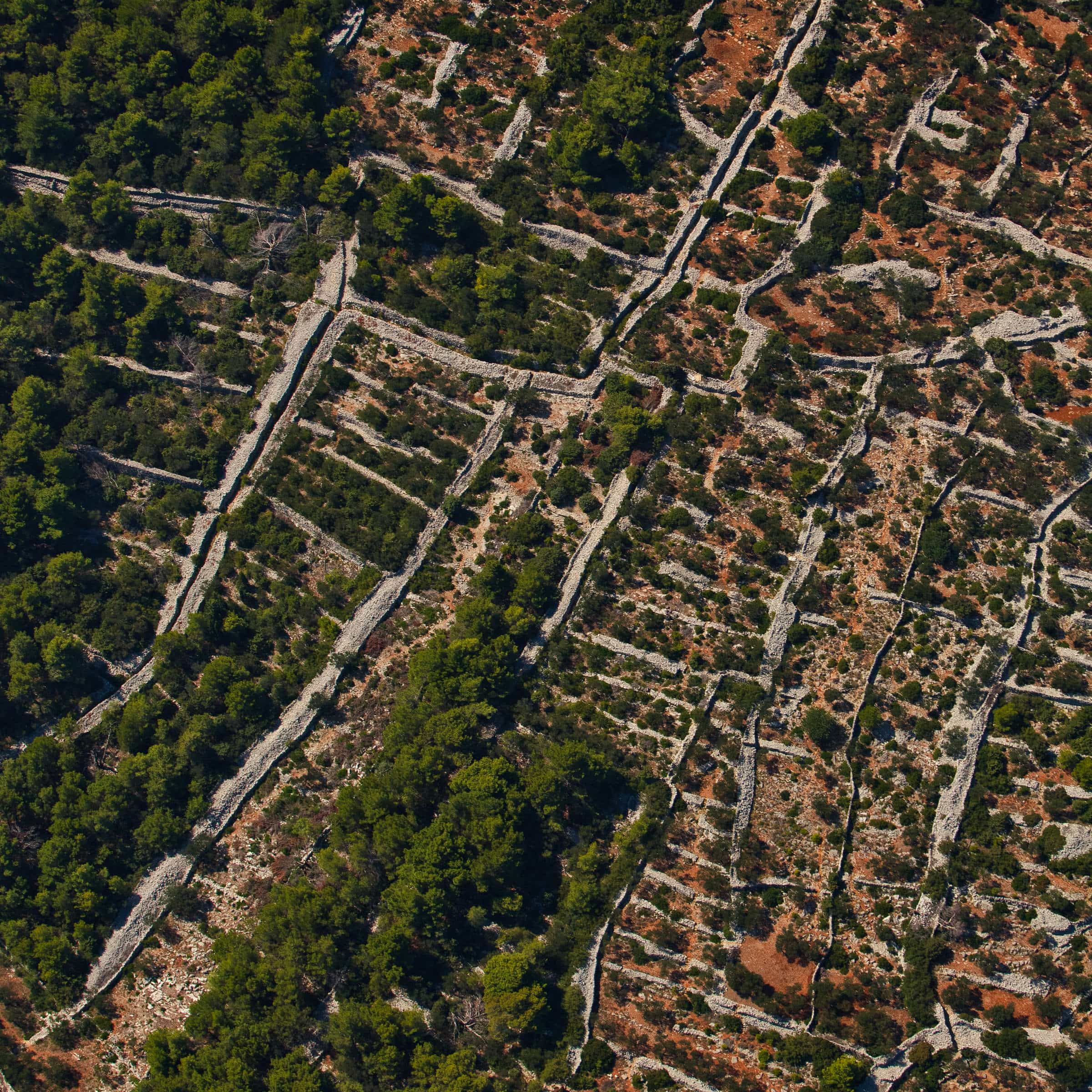 Lošinj / Mario Romulić
Lošinj / Mario Romulić
Why Via Apsyrtides? The poetic name has its origins in the Greek myth of Jason and the Argonauts, a story which also gave the name to the entire archipelago of Cres and Lošinj.
When the Argonauts fled Colchis with the Golden Fleece, Medea’s brother Apsyrt was tasked with retrieving the stolen treasure. Legend has it that Apsyrt finally caught up with the crew in the Northern Adriatic, whereupon he was tricked by his own sister and was captured by Jason’s crew.
Jason killed poor Apsyrt and Medea then chopped his body into pieces, which transformed into islands upon being thrown into the sea. An unnecessarily cruel move, perhaps, but the newly formed archipelago was named the Apsyrtides in his honour.
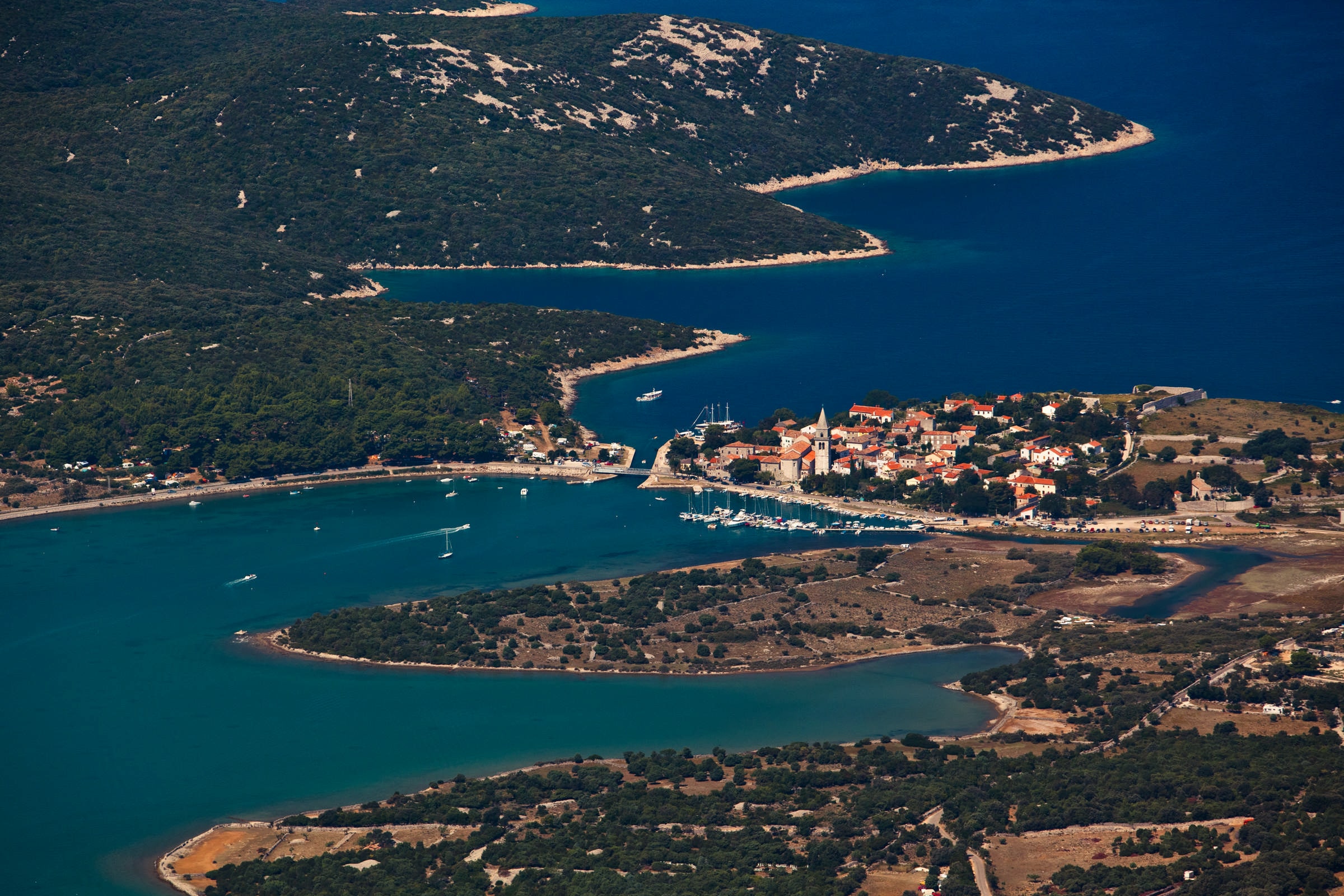 Osor town, Cres island / Mario Romulić
Osor town, Cres island / Mario Romulić
Via Apsyrtides now runs through the entire archipelago and is almost ready to welcome the first thru hikers. Along the way, they’ll learn about the cultural heritage of the islands and their wondrous natural features. It’s envisaged for the trail to become a tourist product, one that will attract visitors outside the summer season and thus contribute to the development of sustainable tourism in the area.
hatIn 2021, a historic network of 75 kilometres of trails on Cres were restored as part of the European project VALUE. They’re now connected to the Via Apsyrtides transversal and marked with the recognisable VA logo in blue and red, along with educational panels put up along the route to get the hikers better acquainted with the island.
Trail marking was carried out by the company Xplore Cress in cooperation with authorised markers and according to the standards of the Croatian Mountaineering Association.
A comprehensive website is in the works that will present a detailed overview of all the stages, complete with trail maps and selected sights to discover along the route. The site is still under construction and should be completed in a few weeks, but the map and the overview are ready to explore - head here to discover what wonders await at Via Apsyrtides.
Construction of Cres Solar Power Plant Still Up in the Air After a Two Year Delay
February 14th, 2022 - The power plant on Cres will produce about 8.5 million kWh of electricity per year, enough to supply some 2,500 households
The Cres solar power plant, a development worth 41 million kuna situated at the location Orlec-Trinket on Cres island, is to be the largest solar power plant in the country. That is, if construction ever kicks off. The foundation stone was laid almost two years ago, and so far, next to nothing has been done, reports Novi list/Marinko Glavan.
Solar panels for the entire power plant have been manufactured, and all that remains is to install them, connect them to the grid and put them into operation. However, due to disputes between the investor HEP and the contractor, a consortium made of PVI Solar, PVI GmbH, Intecco and Deling, a solar power plant that was supposed to start producing environmentally friendly electric power in late 2020 not only isn’t in operation yet, but still has to be built.
The Cres solar power plant at the Orlec-Trinket site has an estimated capacity of 6,5 megawatts (MW), enough to meet the needs of about 2,500 island households. It’s supposed to ensure a stable supply of electricity and increase the energy self-sufficiency of Cres and Lošinj islands, particularly in periods of increased consumption brought on by the tourist season.
The solar power plant project, which was supposed to be the first large solar power plant in Croatia with a projected annual production of about 8.5 million MWh, was devised entirely by the Kvarner Regional Energy Agency that is owned by Primorje-Gorski Kotar County, who all but gifted the project to HEP.
The Franciscan order on Cres ceded 17 hectares of land necessary for this development, and two years ago, all that remained was seemingly just a matter of formality. The public procurement process was completed, the contractor was selected, the works formally started, and the foundation stone ceremonially laid by HEP President Frane Barbarić, then Minister of Tourism Gari Cappelli, and Minister of the Sea, Transport and Infrastructure Oleg Butković. However, not much has happened on the construction site since June 2020.
Asked what was going on with construction of the power plant, Cres Mayor Marin Gregorović said that the Town of Cres doesn’t have any information either, although the question has been raised at a Town Council meeting.
‘We raised the question with the investor, but didn’t receive a reply. There are plans for the construction of the second phase of the Trinket power plant, which should ultimately have a capacity of about ten megawatts. In the Town of Cres we believe that local self-government units, namely the towns of Cres and Mali Lošinj, should be involved in these projects so that our citizens can benefit from them. This way, I fear that the surplus of produced electricity will be exported to the mainland outside the tourist season, and the citizens of Cres won’t benefit from it. Neither will the Town of Cres, except for local fees for construction’, said the mayor.
‘We’re building an energy community on Cres and we’re planning to build another solar plant on the northern side of the island, and where the solar plant at Orlec is considered, I can only say I’m disappointed as it should have already been in operation, meeting the greater part of our citizens’ needs. Outside the tourist season it would meet the needs of the island entirely’, added Gregorović.

According to the information known to Novi list, the delay was caused by an increase in building materials, as well as other costs, which led to a dispute between HEP and the contractor. Novi list sent an inquiry to HEP as to whether the contractor had requested a price correction and if so, in which amount. They also inquired whether the contract was still in force or had been terminated in the meantime.
HEP replied that the project was delayed due to the contractor having failed to meet their contractual obligations within the agreed deadlines.
‘We are working intensely to resolve this situation and expect the project to continue soon.
The solar power plant will be built in its full projected size, with a connected power of 6.5 megawatts. We wish to note that the local manufacturer Solvis has already manufactured and delivered all 20,332 photovoltaic modules required for the power plant.
The Cres solar power plant will produce about 8.5 million kWh of electricity per year, which corresponds to the consumption of some 2,500 households. The investment is valued at more than 40 million kuna’, stated HEP.
Novi list also sent an inquiry to the contractor, PVI d.o.o., to which the company replied they had faced unforeseen difficulties.
‘Namely, HEP made modifications to the project task after the contract was signed, in order to enable confirmation of the main project and obtaining of a building permit. This was preceded by the necessary change of the obtained location permit, which could not have been foreseen before the conclusion of the contract, and all of the above required additional time before construction works began on the solar power plant.
Restrictions were then introduced to fight the COVID-19 pandemic, followed by a significant increase in prices of materials in the construction sector. Such a demanding and large project requires open communication between key stakeholders, as well as a full understanding of the context that is particularly unpredictable in a pandemic.
Unfortunately, as a client, HEP did not show reasonable understanding for the described difficulties which caused the disruption in the construction schedule. Negotiations are still ongoing, with the goal of finding an appropriate solution and enabling the execution of the project as soon as possible’, stated the contractor.
Floating Bin Installed in Cres Port to Filter Sea Water and Collect Waste
February 14th, 2022 - The device collects an average of 1.5 kg of floating debris per day
A new device was recently installed in Cres port to help prevent sea pollution. Called ‘Morska škovacera’ in Croatian, the sea bin is meant to collect floating debris in the main port on Cres island.
The floating bin continuously filters seawater by collecting plastic, microplastic, detergents, oils and other substances from the surface, preventing them from floating out to sea or falling to the seabed where they can harm marine life.
The device collects an average of 1.5 kg of floating debris per day, reports Morski.hr.
A panel was installed on the pier containing more information regarding the new device and the praiseworthy project in general.
‘The floating waste arrives in the sea through the negligent behaviour of individuals, but also as a consequence of activities in various economic fields and represents a significant global environmental problem with a wide range of impact on marine life. Among the waste that reaches the sea, plastic is a special problem because it gradually decomposes into so-called microplastics which, absorbing various toxic substances and harmful microorganisms, enter into the food chain and eventually come to the table of fish consumers, endangering their health.
The goal of the project Morska škovacera is to raise awareness of the general public about the issue of floating waste and plastic in the sea, and is part of a broader effort of the Town of Cres and the island community to reduce the use of plastic and production of marine waste’, the panel reads.
The project was implemented by the local utility company Komunalne usluge Cres Lošinj d.o.o in cooperation with the County Port Authority of Cres. It’s worth around HRK38,000 and was financed by the European Maritime and Fisheries Fund.
ACI Marina Cres Proudly Flies Blue Flag for 22nd Year in Row
June the 6th, 2021 - ACI Marina Cres is enjoying the ability to fly the prestigious blue flag for the 22nd year in a row, showcasing its dedication to the environment.
As Morski writes, ACI Marina Cres, one of the most beautiful island marinas along the entire Croatian Adriatic, raised the blue flag for the 22nd time on the eve of World Environment Day. The blue flag for beaches and marinas is a highly valued tourist brand which is recognised and appreciated across the world, and is an important landmark to seek out for tourists when choosing a holiday destination.
The blue flag is also the most recognised model of environmental education and public information awarded by the Foundation for Environmental Education (FEE).
The ceremony of raising the blue flag at ACI Marina Cres was attended by the marina's receptionist Marijan Sablic and the German guests Ulla and Peter Fernitz, as well as the port captain of the Port of Cres, Djordan Veskovic. The director of ACI Marina Cres, Alan Sepuka, said on the occasion:
''The blue flag is a top tourist promotion in our opinion. It symbolises a well-preserved and safe environment, sustainable development in tourism based on high quality service, a clean sea and coastline and it speaks of the quality of the equipment and overall arrangement of ACI Marina Cres.
The blue flag for both beaches and marinas is part of an international environmental programme to protect the environment of the sea and coastline, which aims at sustainable management and governance of the sea and the general coastal zone. The blue flag is an award given only for one season at a time and the application for it to be flown must be renewed every year, meaning that ACI Marina Cres has done an amazing job in managing that for 22 years in a row.
The criteria for awarding the blue flag are very demanding and cover a number of areas: environmental education, public information, water quality, environmental management, as well as the safety and quality of services.
It is interesting to note that the blue flag is currently boasted by all ACI marinas open for business throughout the year, which confirms that ACI, as the largest chain of marinas in all of the Mediterranean, takes the proper care of the sea and the coastal zones in which they operate, and especially coastal areas such as beaches and marinas that suffer the most pressure.
For more, follow our dedicated lifestyle section.
ŽLU Cres Plans to Continue Investing over HRK 80 million in Port Infrastructure
*This is a sponsored story*
May 10, 2021 - After arranging the western part of the Cres port, with the help of EU funds, the County Port Authority (ŽLU Cres) plans to invest in developing Martinšćica and Valun ports to create preconditions for additional nautical tourism - 93 new municipal connections and an increase in liner passenger vessels.
Reconstruction and extension of the port open to public traffic of county importance in the settlement Martinšćica on Cres Island
In 2021, ŽLU Cres plans to apply for the reconstruction and extension of the Martinšćica port to the tender of the Ministry of Regional Development and European Union funds, which would reconstruct another Cres port, after the western part of Cres port, with European funds, through the Operational Program Competitiveness and Cohesion 2021-2027. The project documentation for the tender is already ready.
So far, phase A has been realized, i.e., extending the Main Pier by 25 meters, in the value of about HRK 7.3 million, which created the preconditions for continuing the modernization of Martinšćica port. Its extension provided better protection of the eastern part of the waters and better berths (internal) for year-round mooring of liner and fishing boats and large yachts for seasonal mooring from the outside.
The following two phases of the project, worth HRK 38.5 million or almost 80 percent of the total project value, would apply for European funds at this time, which include:
- construction of a breakwater with a shell on the outside (phase B)
- new wall and manipulative plateau (phase E).

The new Martinšćica port project will provide a protective breakwater with a seawall about 90 meters long, which will provide safe and sheltered access for passenger ships, a manipulative plateau, concrete pier 1 in the length of 70 meters, and new coastal walls in the total length of about 312 meters, which would also provide an accessible pedestrian path to the center of the settlement.
The other two phases, worth HRK 9.6 million, will include extending the Fratarski mule (phase C) in the length of 56 meters and three pontoon piers (pier 2, 3, 4 - phase D) with a total length of 186 meters. ŽLU Cres would finance this part of the project itself, at the moment when there are financial resources for it.
The project's total value, which includes phases B, C, D, and E, is estimated at a total of HRK 48.4 million.
The project will better connect the Martinšćica island population with the mainland, which will make it easier for residents to access daily activities, as well as create preconditions for the economic and social development of Martinšćica - long-term impact on the quality of life of on Cres.
The value of the investment is of great economic importance and contributes to the further development of Martinšćica in the long run.
The project will contribute to regional development and affect the development of port infrastructure and maritime network traffic and the additional development of island tourism, which benefits the entire Cres community.
The spatial coverage of the initiative refers to the area of the Martinšćica port, including the area of the sea and the coast with the coastal road, with a total area of 4.25 ha.
By extending the Main Pier and constructing a new, southern breakwater on Branič, the port area would be fully protected, which will affect the additional protection of property (vessels) of citizens, while the part intended for public transport is being arranged within the port, it is also planned to arrange safe berths for fishing and tourist-excursion boats.
By extending part of the port, the goal is to create the preconditions for receiving larger liner passenger vessels - catamarans and excursion boats.
There are plans to arrange the western part of the port on Branič and build a new concrete pier of about 75 m wide and 2.5 m wide, which will be used for mooring local vessels, while free berths in that part of the port will be used to accommodate sports (nautical) vessels in transit.
To moor sailors in transit, two floating piers 72 and 64 m long, 2.5 m wide in the southern part of the port, and one pier 50 m long and 2.5 m wide in the northern part of the port are planned. The piers are equipped with connection cabinets and mooring equipment.
The existing appearance of the coast with a natural beach will be kept in front of the monastery.
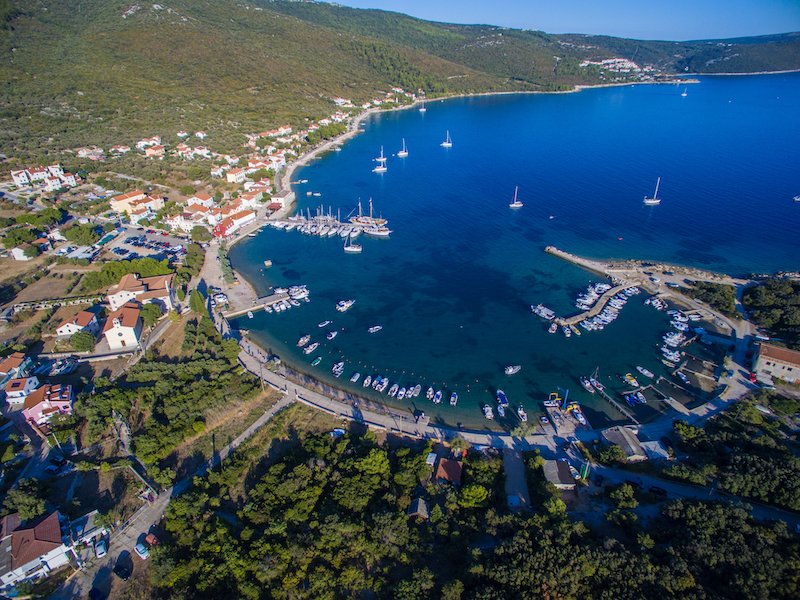
By arranging the shore and building one concrete and three pontoon piers and reorganizing the waters, about 170 berths will be provided.
The western part of the coast in the Martinšćica port will be arranged and used as an attractive coastal public pedestrian space - in this way; the citizens will get a new waterfront and a new attractive view. The coastal promenade will be equipped with urban equipment: benches with backs, wastebaskets, a small fountain, and public lighting poles, and the necessary port equipment on the moorings.
The existing coastline is planned to be corrected to obtain the necessary profile of the public part of the coast, with a total width of 9-10 m, sufficient for arranging a two-way road, a green belt with a tree line, and a coastal promenade.
It is expected that in the existing buildings along the port and the coastal road, as well as in those yet to be built, facilities in the port will be arranged that will make this area attractive to residents and visitors, including catering facilities, entertainment, sports, and recreation, and various services and shops.
Wastewater from the vessel will be accepted in a separate tank. The port authority will collect these waters in an organized manner and take them for treatment (purification), contributing to the long-term preservation of the environment.
The Main Project Certificate (Building Permit) has been obtained and activated for the project.
Reconstruction and extension of the port open to public traffic of local importance - Valun port."
The Valun port is planned as a port of local importance open to public traffic. The port is planned to be reconstructed within the mainland and the associated waters.
Project documentation has been prepared for the project - "Reconstruction and extension of the port open to public traffic of local importance - Valun port" - the total investment is estimated at HRK 42.2 million.
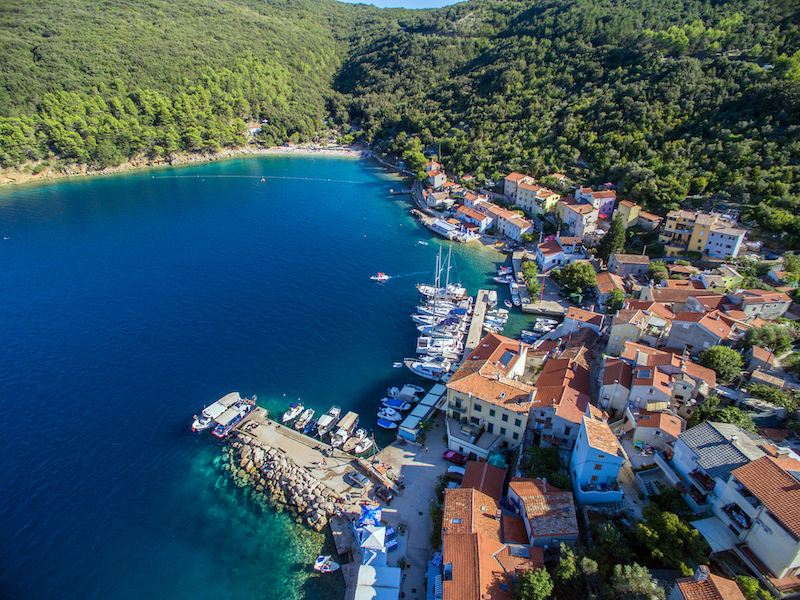
Before
The goal of arranging and upgrading Valun is to increase the number of berths, the possibility of mooring high-speed ships (catamarans) and tourist ships, and the exposure of existing berths to waves from the north and northeast. Due to overcrowding and exposure to the local wind climate, boats are endangered in the current state of the port. With the realization of the project, the property of the citizens will be protected.
Reconstructing and upgrading the existing breakwater and constructing two new fixed piers are planned; the breakwater will be based on a newly erected stone embankment, while fixed piers will be placed on a single row of piles. Everything will be lined with stone.
Within the port area of the port open to public traffic of local importance, a communal berth is planned, an operational shore - an area intended for regular maritime traffic, a fishing berth, a nautical berth, and moorings.
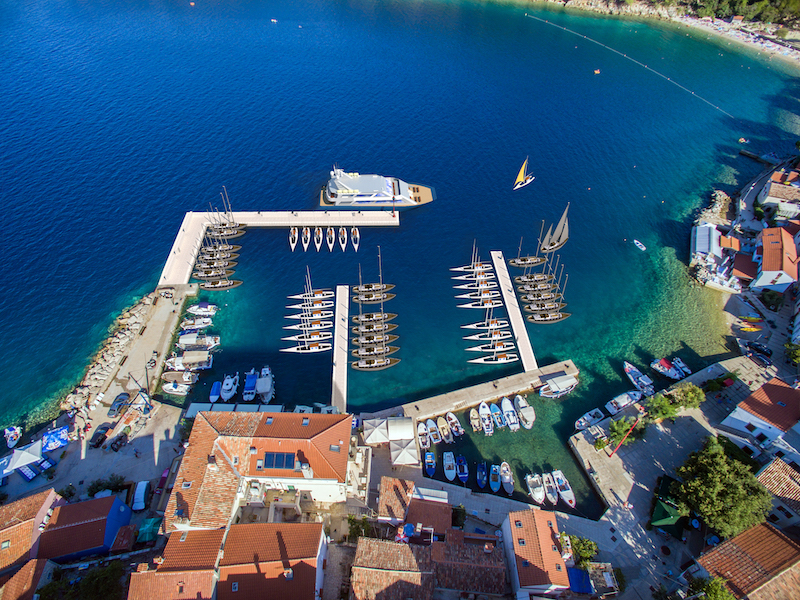
The existing breakwater is extended and L-shaped, total length 81.5 m, width 5-6 m
The first part of the extension is carried out in the direction of the existing breakwater, in the length of about 22.4 m measured from the inside and 27.6 m measured from the outside. This part of the breakwater extends in the east-west direction. Then the ground plan fracture is performed at almost 90 degrees, and the continuation of the breakwater is performed in the north-south direction. The length of this second part, measured from the inside, is about 47.9 m, and from the outside about 52.8 m.
In addition to extending the breakwater, it is planned to build two dissected piers within the port waters, which will be constructed as reinforced concrete (fixed) structures on "Benotto" piles and stone cladding. Fixed piers will be 32m (pier 1) and 36m (pier 2) long, 2.5 m wide.

The piers are planned as fixed dismantled structures, deeply based on reinforced concrete "Benotto" piles, and will be equipped with mooring rings, while the breakwater will be equipped with bollards and mooring rings. Cabinets for water and electricity supply to the vessel is planned to be installed on the newly planned maritime structures.
Since there are no hydrants in the area, as part of the main project, the development of a new hydrant network will be envisaged, which will cover the port area with fire protection - the security of the said area will be raised.
About the Cres County Port Authority
The Primorje-Gorski Kotar County system of county port authorities dates back to April 8, 1999, when the County Government of Primorje-Gorski Kotar County made decisions on establishing eight County Port Authorities, including the Cres County Authority.
ŽLU Cres was established for ports of county importance: Porozina, Merag, Cres with a separate port basin Grabar and Martinšćica, and ports of local importance: Beli and Valun, based in Cres.
ŽLU Cres started its independent work in January 2000.
For more, follow our business section.
President Zoran Milanović Visits Cres Island
ZAGREB, 24 March, 2021 - President Zoran Milanović visited Cres Island on Wednesday and the local cheese factory that is run by the Loznati agricultural cooperative, the construction site for the Orlec solar power plant, the refurbished Moise Palace and the reconstructed port in the town of Cres.
During his visit to the Loznati cheese factory, Milanović was informed that its new plant was waiting for an official inspection and permit to launch operations and the production of sheep and goat cheese.
The Loznati cooperative has a flock of about 350 sheep and it plans to attract other local sheep farmers to join the cooperative. A total of HRK 5.5 million was invested in the cheese factory, with HRK 2 million of that being a grant from the EU Rural Development Programme, HRK 2.5 million from a loan with the Croatian Bank for Reconstruction and Development (HBOR) and the remaining HRK 1 million invested by the cooperative itself.
The President then visited the HRK 45 million Orlec solar power plant.
The project was presented to the President by a member of the management board of the HEP national electricity provider, Petar Sprčić, the director of the Kvarner regional energy agency and member of the president's energy council, Darko Jardas and others.
The area of the future power plant covers 17.3 hectares divided into 13 segments and each will have a power of 500 kilowatts and a total installed power of 6.5 megawatts.The plant is expected to generate almost 8.5 million kilowatt hours of electricity a year which is sufficient to supply 2,000 average households.
Milanović said that visiting the power plant was the "most important element of his visit to Cres."
For more about politics in Croatia, follow TCN's dedicated page.
Circular Economy on Islands Lags Due to Low Environmental Awareness
February 17, 2021 – In a video podcast entitled "Energy Transition on the Islands," organized by the Island Movement initiative, participants warned that underdeveloped environmental awareness is one of the main obstacles to implementing the circular economy on islands.
As Hina reports, the deputy mayors of Hvar and Cres warned that citizens are still unaware of the green economy's importance, which makes it challenging to introduce a circular economy on islands.
"The most difficult phase in achieving sustainable development is to explain to ordinary citizens why the energy transition would be a step forward," said Marin Gregorović, deputy mayor of Cres.
The circular economy is a production and consumption model that encourages sharing, borrowing, reuse, repair, recovering, and recycling of products and materials to achieve the product's added value. Such a concept has a positive effect on reducing the amount of waste.
Commenting on the inefficient disposal of waste on the islands, Gregorović noted that "the system is not working well" and that "we have not yet reached the stage of resolving the issue of biowaste disposal."
"Although we have a recycling yard and dual waste management on Cres, and we plan to build a composting plant, the story of the circular economy is still just – a story," said Gregorović.
Kuzman Novak, deputy mayor of Hvar town, added that "the fundamental problem at the national level is waste management."
"We take the garbage bags out of the house, and they are taken away, which we don't see, so we don't think they are our concern anymore. That is the key problem," Novak said, explaining the underdeveloped environmental awareness of citizens.
"When we talk about sustainable development, it's not just about solar power plants and waste management, it's essentially developing an awareness not to be selfish," said Novak.
The new EU Action Plan for the Circular Economy is one of the key elements in achieving climate neutrality, which is a central goal of the European Green Plan. Voting on the new EU circular economy action plan, the European Parliament this month called for additional measures to achieve a carbon-neutral, environmentally sustainable, and fully circular economy by 2050.
To read more about lifestyle in Croatia, follow TCN's dedicated page.
Best Cities in Croatia Announced, Four Cities Defended Last Year's Title
October 21, 2020 – Among 28 nominated cities in the categories of quality of life, economy, and education and demographic policy, 10 of them received the award and the title as the best cities in Croatia.
As we already reported yesterday, Sveta Nedelja was named as the best city in the economy category for the third year in a row and is among the top five best Croatian cities for quality of life. Gradonačelnik.hr emphasizes the fact that Sveta Nedelja is the only city that managed to beat the competition three times in a row and win the title of the best city for the economy in the country. Besides the great success of this perspective city in Zagreb County, it is also worth mentioning other Croatian cities that excelled in this election.
The best cities in the category of the economy are also Hvar and Samobor. In the category of demography and education Cres, Labin, and Šibenik won, and in the category of all categories – the quality of life – the best Croatian cities are Krk, Rovinj, and Čakovec. The champion of the EU funds is Virovitica.
As many as four Croatian cities – Labin, Cres, Krk, and the already mentioned Sveta Nedelja – managed to defend the title of the best in our selection this year.
Four out of ten winning cities come from Istria and Primorje-Gorski Kotar Counties, but those counties also had the biggest number of nominated cities and nominations in all mentioned categories. Recall, eight cities of Istria County were competing with as many as 14 nominations, and Primorje-Gorski Kotar Counties were following with its six cities and nine nominations.
This year's selection for the best Croatian cities was held in Zagreb on Tuesday, and it has been successfully organized for the third year in a row by the Gradonačelnik.hr portal, Jutarnji list, and the Ipsos agency. Unfortunately, due to the situation with the coronavirus pandemic, a large number of finalists, and even winners, did not attend the award ceremony.
Unlike previous years, this year the Smart and Eco City categories were separated into a special selection, which is still ongoing, but a new category was introduced – the best county EU project.
Counties also received awards
After the public chose their favourite through online voting – the project PISMO of Sisak-Moslavina County and their agency SIMORA – the expert jury chose the winners in four categories. Virovitica-Podravina County with its project Be STEMpatičan! (Be STEMpathetic) is selected as the winner in the Contribution to the science and innovation category.
In the category Contribution to the local and regional community, the best project was NEWLIGHT of Krapina-Zagorje and Zagreb counties, ie the Regional Energy Agency of Northwestern Croatia (REGEA). Second place in the public selection, Mala Barka 2 of Primorje-Gorski Kotar County won in the category Contributions to cross-border cooperation, and Split-Dalmatia County won in the category of Contribution to entrepreneurship with the project Sustainable growth of small and medium enterprises with emphasis on cultural and creative industries.
Project PISMO Novska of Sisak-Moslavina County / PISMO
100 Million Euro Matalda Golf Course on Cres Island Back in Spotlight
October 20, 2020 - The Ministry of Economy and Sustainable Development has launched an environmental impact assessment procedure for the Matalda golf course on Cres Island.
HRTurizam reports that it is a long-awaited project for constructing a golf course, with a total value of over 100 million euro, and whose investor is Jadranka d.d. from Mali Lošinj.
As it is pointed out in the public invitation, the construction of a combined golf course in five phases is planned and facilities for catering and tourist facilities and other facilities on about 324 hectares.
Thus, two golf courses with a total of 36 holes are planned, as well as two hotels, a winery, and 20 villas in two zones. The hotel will have a total of 122 accommodation units with 260 beds, while another hotel is planned with 57 accommodation units with 126 beds. Both hotels would have indoor and outdoor pools. Villas in zone A will have a total of 92 beds, and villas in zone B, 80.
In addition to the accompanying buildings and facilities, it is planned to build a winery with a tasting room for guests on three floors, which will offer local wines. In addition to the construction of roads and piers for maritime transport, the complex would also have a heliport. What is important to emphasize is that the irrigation of the golf course plans to use water from the lake, which would be carried out on an area of 3ha with a capacity of 165 000m2.
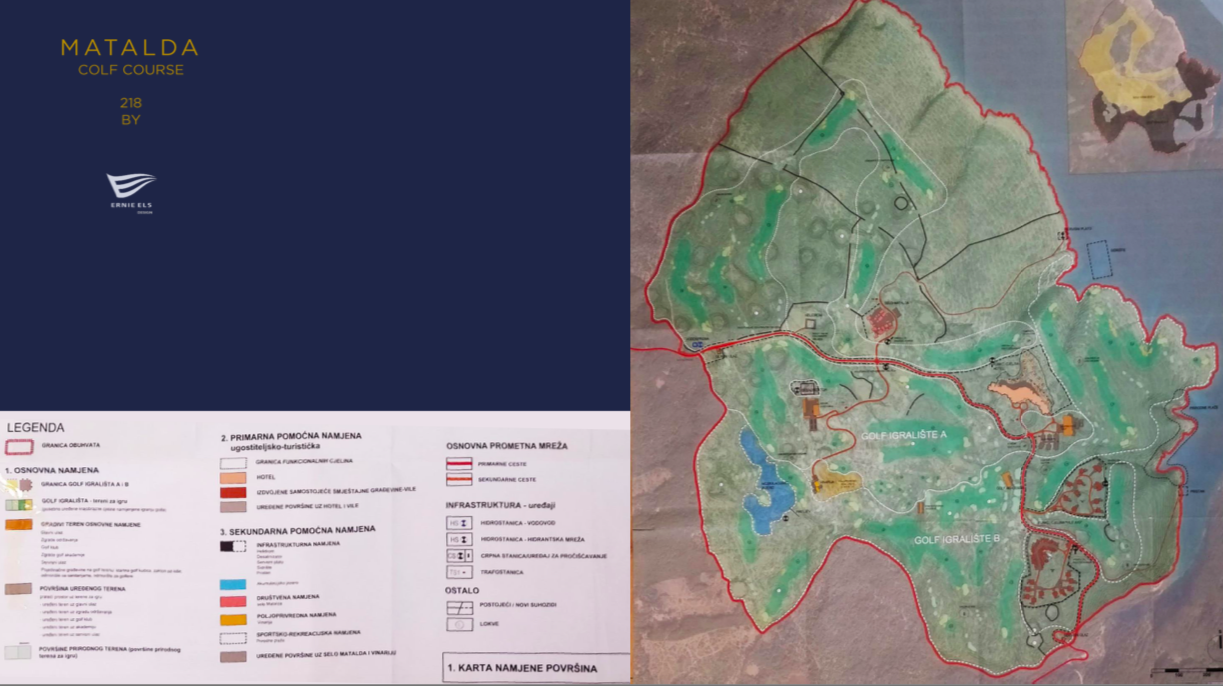
Jadranka d.d.
The public invitation points out that it will organize a public debate on the study on the Matalda golf course's environmental impact on the island of Cres, which must not be shorter than 30 days. Notice of the place and time of the public hearing will be published on the Ministry's website.
The entire preparation of the project started back in 2014. In December 2018, the Primorje-Gorski Kotar County Assembly accepted targeted changes to the spatial plan. The same project was included among the "Buildings and interventions of the county and state interest."
According to previous announcements, Jadranka d.d. intends to invest around 100 million euro in this golf course project. The design of the course is signed by Ernie Els, a world name that attracts big and famous players to golf destinations.
For the latest travel info, bookmark our main travel info article, which is updated daily.
Read the Croatian Travel Update in your language - now available in 24 languages.


